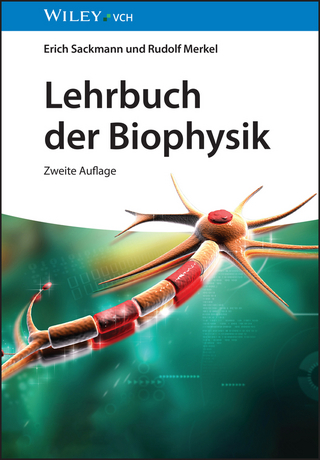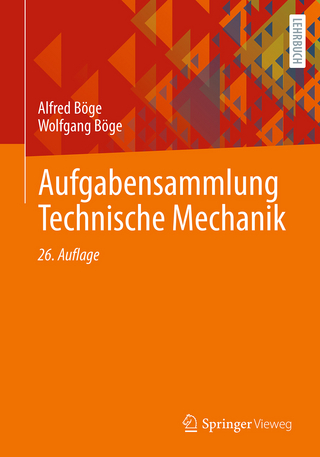
New Insights into Molecular Electronic Structure Theory
Academic Press Inc (Verlag)
978-0-443-34357-5 (ISBN)
- Noch nicht erschienen (ca. Juni 2025)
- Versandkostenfrei
- Auch auf Rechnung
- Artikel merken
Born in Aberystwyth, Wales and educated at Trinity College Cambridge, Philip Hoggan has always been French and British. After a mathematical chemistry background, he has studied a number of theoretical systems, with a DSc by research obtained in 1991 at Nancy, France on the way physical interaction between molecules and solid surfaces is a precursor to catalysis. This was treated entirely on the basis of Quantum Mechanics and applied, first to cis-trans butadiene isomerization on alumina and then a number of ‘organic’ reactions. The first lectureship was at Caen, Normandy from 1992. This period led to some fundamental research of ab initio Slater electronic structure calculations for more than 3 atoms. The first related code STOP was published in February 1996 after much work by a postdoctoral fellow A. Bouferguène, now Professor at U Alberta. After continuing to study catalytic systems at Caen, from a theoretical viewpoint, Philip Hoggan was appointed to the Chair of Theoretical Chemistry in Clermont from May 1998. This is still essentially his teaching position, although research interests have switched to solid-state (surface) physics joining the Pascal Institute for physics in Clermont from 2005. This followed a visiting professor stay of 18 months at Tallahassee, Florida in Theoretical Physics. Research emphasis has shifted from the STOP era (where the problem was solved by Coulomb Resolution in 2008) to Quantum Monte Carlo (QMC). The CNRS paid leave for a couple of years for Philip Hoggan to learn about this technique from Cyrus Umrigar, Julien Toulouse, Michel Caffarel and others. Of course, it eventually led to a project to calculate catalytic reactions on metal surfaces that was initiated by G-J Kroes (Leiden, NL) and his ERC in 2014. K Doblhoff-Dier arrived in Clermont for a ground-breaking research fellowship and each of us continues to produce very accurate work e.g. on hydrogen (production and dissociation on metals), as a clean fuel for renewable energy. Now, in 2023 we enter the 400th anniversary of Blaise Pascal’s birth. He invented calculators, some of which are in the Clermont museum. It is wonderful to work in the institute that bears his name conducting QMC on catalytic hydrogen synthesis on super-calculators: the tools that trace their roots to his ‘Pascaline’. Philip Hoggan is married and has twin daughters.
Comprehensive Characterization of the Gemfibrozil Molecule: DFT UV NMR ELF Fukui Function Analysis Thermochemistry
Multistate Density Functional Theory and Applications
A first step towards the development of exchange-correlation functionals from X-ray diffraction data
A complex Gaussian representation of continuum wavefunctions respectful of their asymptotic behaviour
On the sign problem of Auxiliary-Field Quantum Monte Carlo (AFQMC)
Intermolecular Interactions: Interplay of Quantum Chemistry and Machine Learning
Towards a quantum treatment of DNA G-quadruplex: the FMO method elucidates interactions with alkali metal ions
Enhancing the Computational Efficiency of the DoNOF Code with a New Orbital Sorting Scheme and Additional Improvements
Spectrally accurate numerical quadrature formulas for periodic Hadamard Finite Part integrals
Electron-nucleus cusps and jump discontinuities
Holomorphic Hartree-Fock and Density Functional Theories as a basis for multireference electronic structure
Analytical Evaluation of Hylleraas-CI Coulomb and Hybrid Two-Center Integrals over Slater Orbitals. II. Angular Integration
Methods for Evaluating DFT Results to Identify Degenerate States in Organic Small Molecules
Frozen-Density Embedding Theory based treatment of the charge-leak problem in multi-scale simulations
Polynomial expression of molecular integrals with parameters of orbital exponent and atomic distance over STO
Quantum Monte Carlo method for metal catalysis: best practices to obtain chemically accurate activation barriers
| Erscheint lt. Verlag | 1.6.2025 |
|---|---|
| Reihe/Serie | Advances in Quantum Chemistry |
| Verlagsort | San Diego |
| Sprache | englisch |
| Maße | 152 x 229 mm |
| Themenwelt | Naturwissenschaften ► Chemie |
| Naturwissenschaften ► Physik / Astronomie ► Angewandte Physik | |
| Naturwissenschaften ► Physik / Astronomie ► Atom- / Kern- / Molekularphysik | |
| ISBN-10 | 0-443-34357-8 / 0443343578 |
| ISBN-13 | 978-0-443-34357-5 / 9780443343575 |
| Zustand | Neuware |
| Haben Sie eine Frage zum Produkt? |
aus dem Bereich


